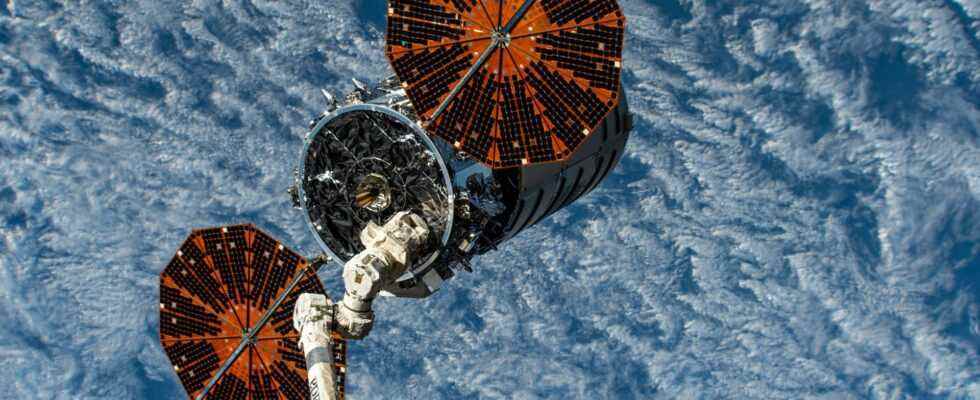After bringing more than three tons of cargo on the international space station in February, the Cygnus NG-17 freighter was undocked yesterday. It will disintegrate in the atmosphere today, but the vehicle has achieved several interesting secondary goals for the future of the ISS and research.
Including raising its orbit!
freight and charges
At first glance, we do not ask much of an orbital freighter. The Cygnus NG-17 took off on February 19, and the most important thing was indeed that it arrived at the station two days later, with its 3.65 tons of equipment.
Consumables (food, drinks, clothes, towels) for the astronauts, spare equipment for the station, almost a ton of scientific equipment, computer equipment and parts for spacesuits reserved for spacewalks… An almost usual list of equipment to store before, a few weeks later, starting to fill the freighter in the other direction, with the station’s “trash cans”, including everything that does not need to be safely returned to Earth.
Just a freighter?
However, as we know, freighters have become a little more useful than that. First, by remaining moored for four months, Cygnus NG-17 served as a temporary storage area. It is also possible to attach in the front area functional racks (the “experiment cabinets” of the ISS), according to the needs of the agencies.
Can it also be used to enhance the station’s orbit? The answer is more complex: this task is usually assigned to the Russian Progress cargo ships, whose interface with the station is connected to tanks internal to the Russian modules. They can therefore transfer fuel or use their thrusters to maneuver.
But, in 2019 already, NASA had tested this capacity. And, in this month of June, again: on June 25, the engine of the cargo capsule was turned on for 5 minutes and 1 second to modify the orbit of the ISS. A first attempt had failed a week earlier, but it’s a step in the right direction. It’s a safe bet that, for future flights of Cygnus, NASA will call on this capability again.
Rotations continue
Undocked yesterday using the Canadarm2 robotic arm, Cygnus is expected to disintegrate in the atmosphere above the Pacific today. Before braking, it will still have the task of ejecting the small satellite in CubeSat format (6 kg) NACHOS, which will test in orbit a small hyperspectral sensor capable of detecting the emissions of certain harmful gases. Even his last day will be busy!
The next cargo ship to join the ISS will take off on July 14. This is the Dragon CRS-25 mission, which should have reached orbit in June, but which was delayed due to a propellant leak detected during ground tests. Which of course led to replacements of parts, other tests, and even the changing of the parachutes as a precaution.
On the same subject :
NASA’s small Capstone probe blasts off to the Moon!
Source : SpaceFlightNow

0